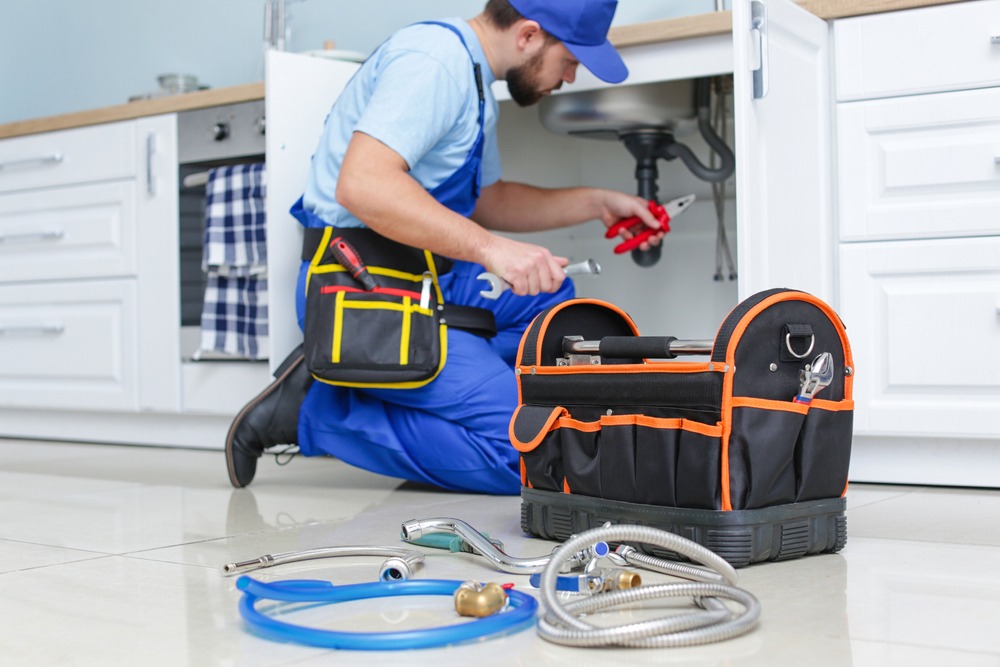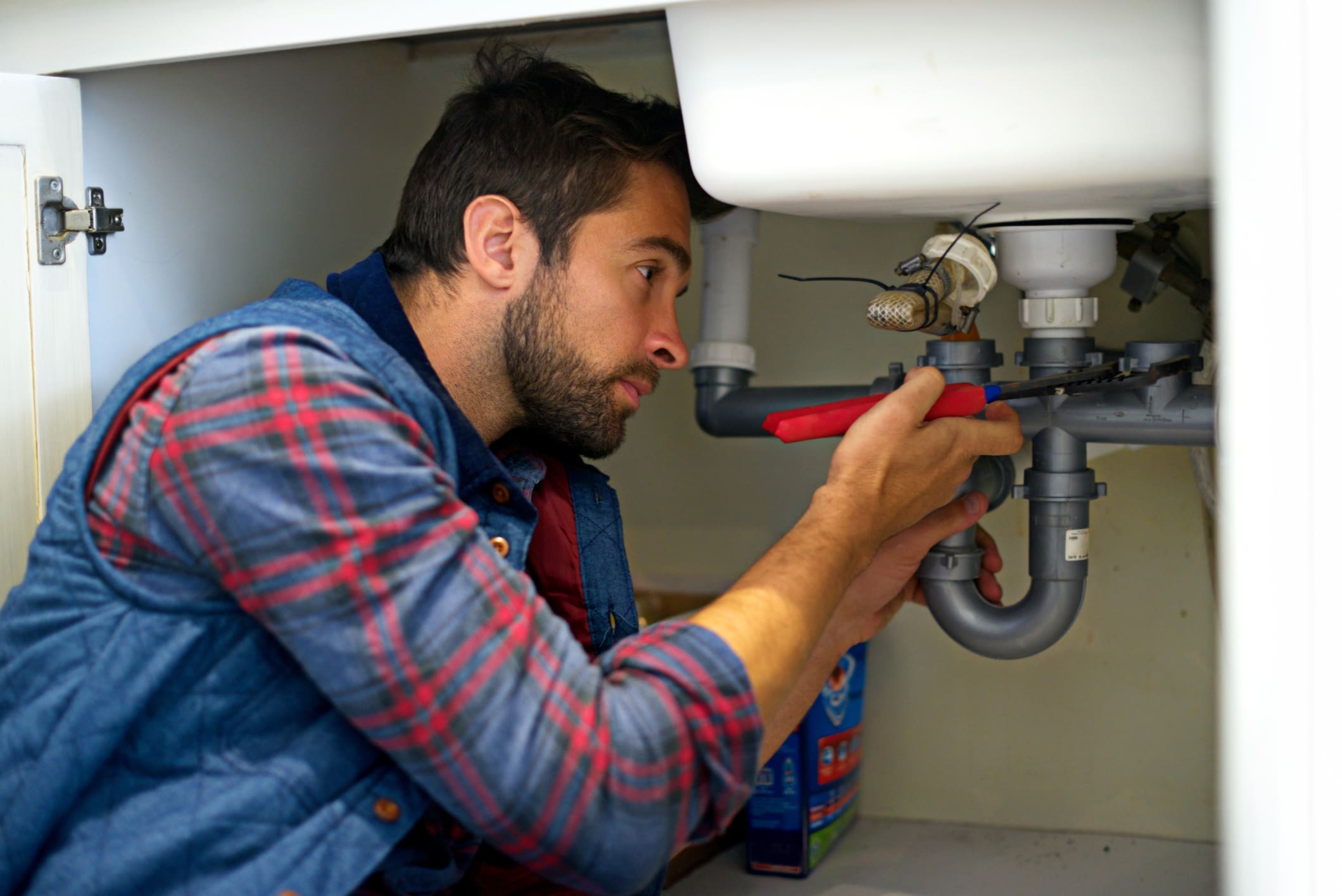Typical Pipes Problems Every House Owner Should Know
Homeowners usually experience a variety of plumbing problems that can disrupt day-to-day live. Common issues consist of leaking taps, stopped up drains pipes, and running bathrooms. These concerns usually stem from worn-out components or debris build-up. Additionally, low tide pressure and ruptured pipes can indicate deeper issues. Comprehending these obstacles is essential for efficient upkeep. Nevertheless, there are other less evident problems that can emerge, which call for closer examination.
Dripping Faucets
Dripping faucets can be an aggravating hassle for home owners. These consistent drips not only develop a frustrating audio but likewise bring about drainage and enhanced utility bills. A leaky tap usually arises from worn-out washing machines, O-rings, or seals, which wear away gradually because of routine usage and direct exposure to water. In some instances, the tap's internal components may be worn away or harmed, necessitating a more extensive repair work or replacement. Identifying the source of the leak is important; property owners may need to take apart the faucet to examine its parts very closely. Routine maintenance can aid protect against leaks, including cleansing aerators and looking for signs of wear. Resolving a leaky tap without delay can conserve water and decrease costs, making it a convenient yet vital job for house owners to tackle in preserving their plumbing systems effectively. Appropriate focus to this typical concern can result in an extra comfy living setting.
Obstructed Drains
Lots of house owners experience the aggravation of clogged drains pipes eventually. This usual plumbing problem can arise from different reasons, including the buildup of hair, soap residue, food fragments, and oil. These materials can create blockages that hinder the flow of water, leading to slow down drain or complete stoppage.In kitchen areas, oil and food scraps are usually the culprits, while shower rooms frequently endure from hair and soap buildup. Regular maintenance, such as utilizing drainpipe filters and preventing putting fats down the sink, can help stop clogs.When an obstruction does happen, house owners might attempt to utilize a bettor or a commercial drainpipe cleaner as preliminary solutions. However, persistent issues may require specialist aid to prevent damage to pipes - Plumbing. Comprehending the reasons and avoidance techniques for stopped up drains can conserve house owners time and cash, making sure a smoother pipes experience

Running Commodes
Running bathrooms are a common issue that can come from different causes, consisting of malfunctioning flappers and chain problems. The continual running not just drainages but additionally causes raised energy costs. Addressing these issues promptly can stop further issues and recover performance to the plumbing system.
Reasons For Running Commodes
A consistent circulation of water from a toilet can be both frustrating and inefficient, usually signifying underlying problems within the pipes system. One usual cause is a worn flapper shutoff, which might not develop a correct seal, permitting water to continually leak into the bowl. Additionally, a malfunctioning fill valve can cause extreme water flow, adding to the issue. Misaligned float devices might additionally cause the commode to run as they fall short to regulate the water level properly. An additional prospective issue is mineral buildup, which can obstruct components and hinder their functionality. Recognizing these causes promptly can assist house owners deal with the problem prior to it rises, making sure effective operation of their pipes system.
Consequences of Continual Operating
Commonly ignored, the effects of a constantly running toilet can considerably impact both water use and home costs. A running commode can waste an average of 200 gallons of water daily, bring about boosted water bills and unneeded resource consumption. This excessive water usage not only stresses the family budget but also adds to environmental worries, especially in locations facing water scarcities. In addition, the continuous sound of running water can be a resource of aggravation, interrupting the serenity of the home - Drain Services. Long term problems may lead to even more significant pipes issues if left unaddressed, resulting in additional economic burdens. Property owners ought to identify the value of timely repair work to alleviate these adverse results and preserve a reliable pipes system
Repairing Running Commode Issues
Toilets that continuously run can be an irritating issue for house owners, but identifying the reason is the first step towards an efficient solution. Common causes include a damaged flapper, which may not produce a proper seal, enabling water to get away right into the dish. If essential, homeowners ought to examine the flapper for wear and replace it. Furthermore, the fill valve can be malfunctioning, creating excess water to stream constantly. Changing this part or changing may resolve the issue. One more possible perpetrator is a misaligned float, which can be adapted to the right elevation. Regular maintenance and prompt repairs can prevent running toilets, ensuring both water preservation and price financial savings on energy costs.
Low Tide Pressure
Low tide pressure can be a frustrating experience for homeowners, often materializing as a weak stream from showerheads and faucets. This issue can stem from numerous causes, consisting of debris build-up in pipes, corroded pipes, or problems with the local water. Homeowners might originally notice low water pressure in specific areas of the home, yet it can escalate to an extra prevalent trouble otherwise dealt with promptly.In some situations, malfunctioning stress regulators can likewise be in charge of inadequate water flow. Routine upkeep, such as flushing the hot water heater and inspecting for clogs, can assist alleviate these issues. If low water pressure continues, it might be required to seek advice from an expert plumbing technician to diagnose and fix the underlying reason. Recognizing the source of low water stress is vital for restoring appropriate water flow and making sure a useful pipes system.
Burst Pipeline
Burst pipes can be a major pipes concern, usually arising from the same variables that contribute to reduced water pressure, such as temperature level fluctuations and maturing framework. When water ices up within pipelines, it broadens, raising pressure till the pipe can no much longer contain it, bring about a rupture. In addition, rust from long term exposure to water can deteriorate pipelines, making them vulnerable to breaking under regular pressure.Homeowners might observe signs of a burst pipeline via sudden water leakages, damp spots on ceilings or wall surfaces, and an unanticipated increase in their water expense. Immediate activity is essential; failing to deal with a ruptured pipe can cause considerable water damages, mold and mildew growth, and pricey repairs. Regular inspections and upkeep of pipes systems can help stop this problem. Shielding pipes in cooler areas and replacing old piping can substantially decrease the threat of burst pipes, securing the home's plumbing stability.
Water Heating Unit Issues
How can house owners recognize water heater concerns before they intensify? web Regular assessment and upkeep can assist find prospective issues early. House owners should seek indicators such as irregular water temperature, uncommon noises, or a reduction in hot water supply. Leakages or pools around the device might suggest a malfunction that calls for instant interest. The look of rust or sediment accumulation can also signify the requirement for maintenance.Additionally, property owners should check the age of their hot water heater; most systems have a lifespan of 8 to 12 years. If the heating system is approaching this age and showing signs of wear, it may be time to show on substitute. Routine flushing of the tank can avoid debris accumulation, lengthening the device's life. By continuing to be vigilant and dealing with concerns immediately, house owners can avoid expensive repair work and assure their hot water heater operates effectively for several years to find.
Drain Line Troubles
Lots of property owners may experience sewage system line troubles at some point, influencing their pipes system's overall capability. Common problems consist of blockages, tree root breaches, and pipe damage. Clogs frequently arise from the buildup of grease, hair, and foreign objects that block the flow of wastewater. Tree roots can infiltrate sewer lines, creating leaks and cracks. In addition, maturing pipes may rust or damage, resulting in additional complications (Plumber Mississauga). Signs of drain line difficulty consist of slow drains pipes, unpleasant odors, and sewer back-ups, which can pose health dangers. Homeowners must address these problems promptly to prevent comprehensive damages and expensive repairs. Routine upkeep, such as set up assessments and cleansing, can help protect against substantial concerns. In extreme instances, specialist treatment might be needed to fix or replace damaged sections of the sewer line. Understanding these potential troubles can aid home owners take positive measures to preserve their plumbing systems properly
Regularly Asked Inquiries
Exactly How Can I Avoid Plumbing Issues in My Home?
To stop plumbing issues, normal maintenance is vital. Property owners ought to examine pipelines for leakages, clean drains, and monitor water pressure. In addition, informing themselves concerning appropriate usage can substantially minimize the danger of future plumbing concerns.
When Should I Call a Plumbing Professional Rather of Fixing It Myself?
When to call a plumber usually depends on the intensity of the Visit Website issue, establishing. Considerable leaks, consistent blockages, or unknown issues call for professional help, guaranteeing safety and security and avoiding further damage as opposed to risking personal efforts at repair.
What Are the Indicators of Hidden Pipes Leaks?
Indicators of surprise pipes leaks include unusual water costs, moist places on walls or ceilings, mold and mildew growth, and a mildewy odor. These signs usually suggest underlying problems that call for professional evaluation and fixing for resolution.
How Typically Should I Have My Pipes Inspected?
Routine plumbing inspections are suggested each to 2 years. This regularity helps recognize potential concerns early, making sure the system remains efficient and minimizing the threat of pricey fixings or unanticipated emergency situations in the future.
Are There DIY Solutions for Minor Plumbing Issues?
